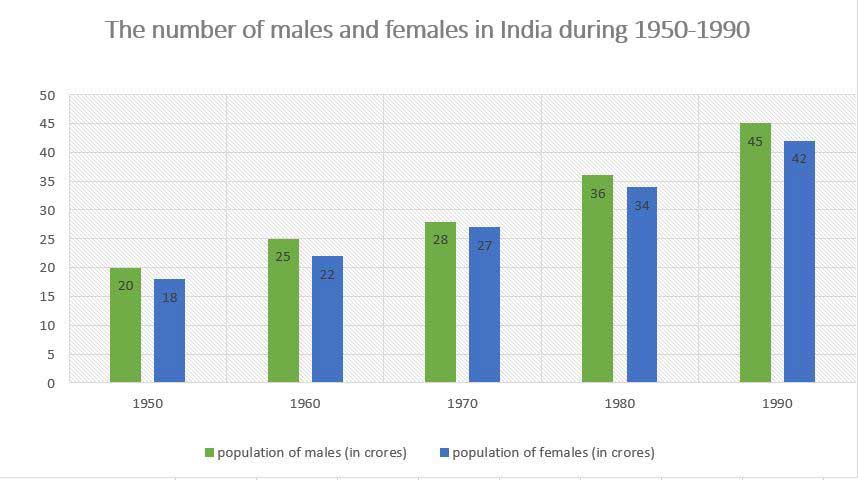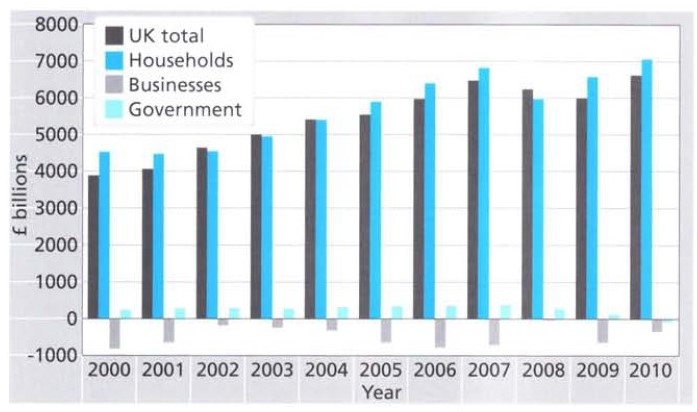WRITING TASK 1: The proportion of males and females in India.
WRITING TASK 1
You should spend about 20 minutes on this task.
The bar graph below shows the proportion of males and females in India during 1950-1990.
Summarise the information by selecting and reporting the main features, and make comparisons where relevant.

Sample Answer
The given bar graph illustrates the number of males and females in India from 1950 to 1990. Over the period of 40 years, the total number of population has drastically increased.
As we can see from the data,the population of females was greater in 1960 than in 1950, whereas, the population of males was higher in 1990 than in 1980. Before 1970,the population of females was higher than the male population,whereas, the population of both males and females has reached at par in 1970. Thereafter, the population of males has started increasing at an increasing rate and reached at a level of 36 crores in 1980.Additionally, As per the records, the population of India has doubled over 40 years.
From 1950 until 1990, the graph suggests that the sex ratio in India has considerably declined due to different reasons.It is also clear that, initially the female population in India was higher than the male population, which had completely reversed during the given period.
IELTS Dehradun Uttarakhand Tel: 8439000086 , 8439000087




